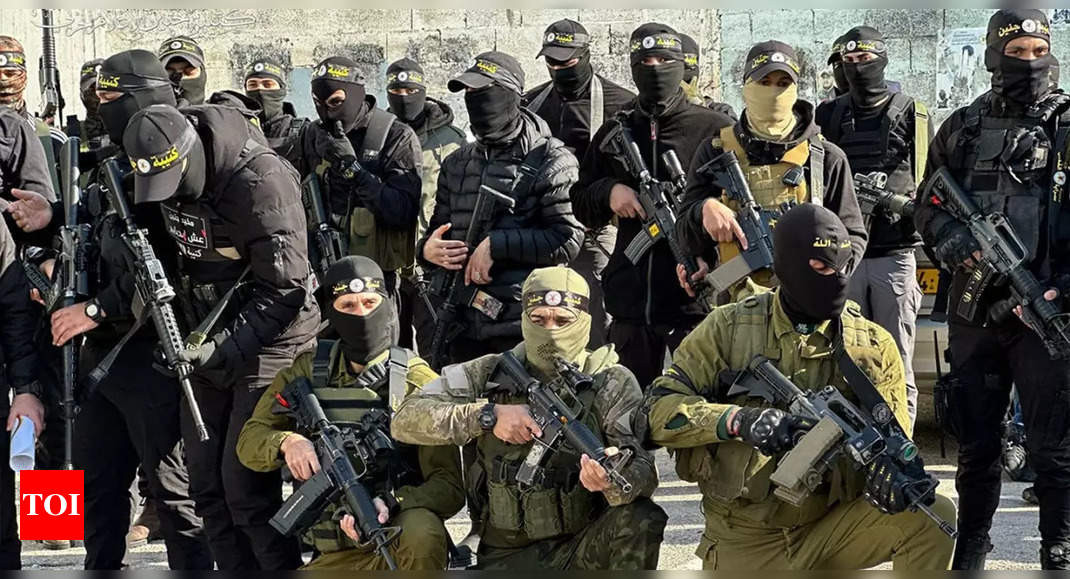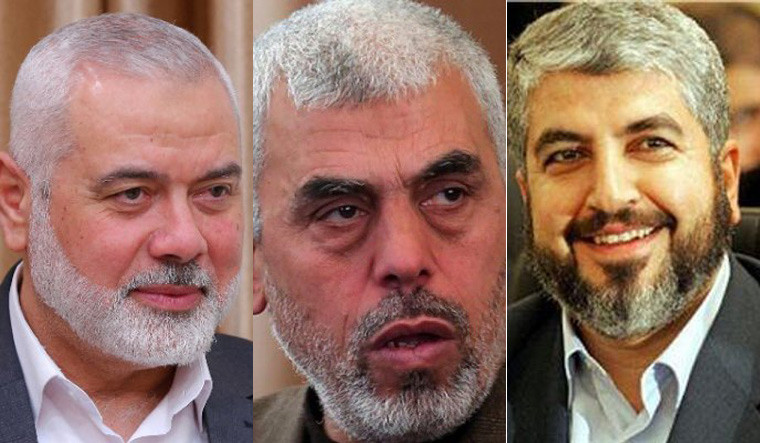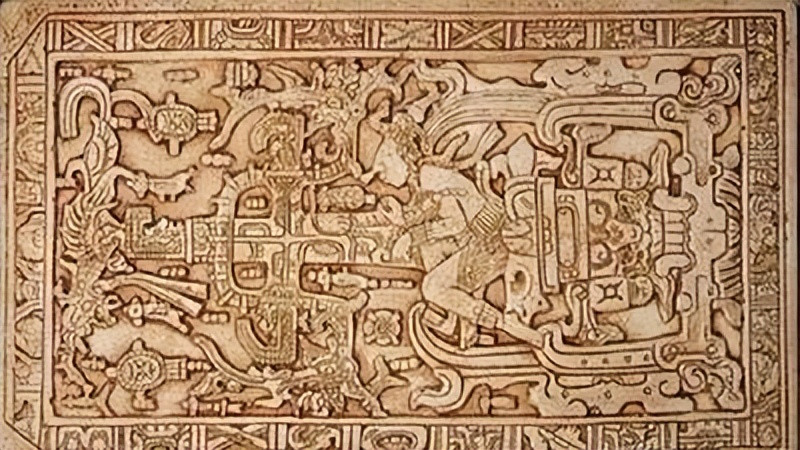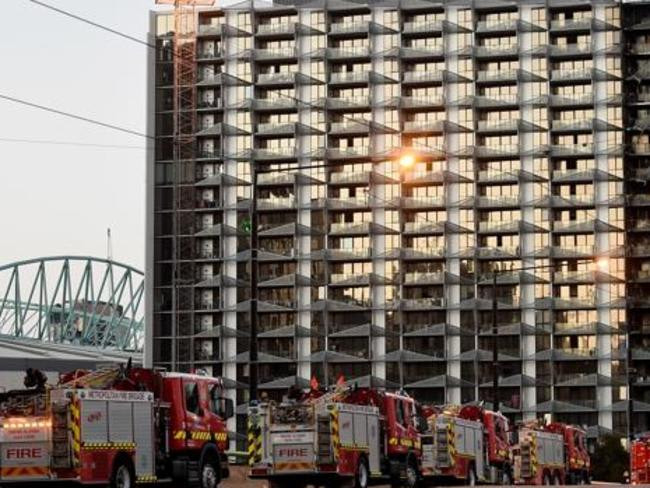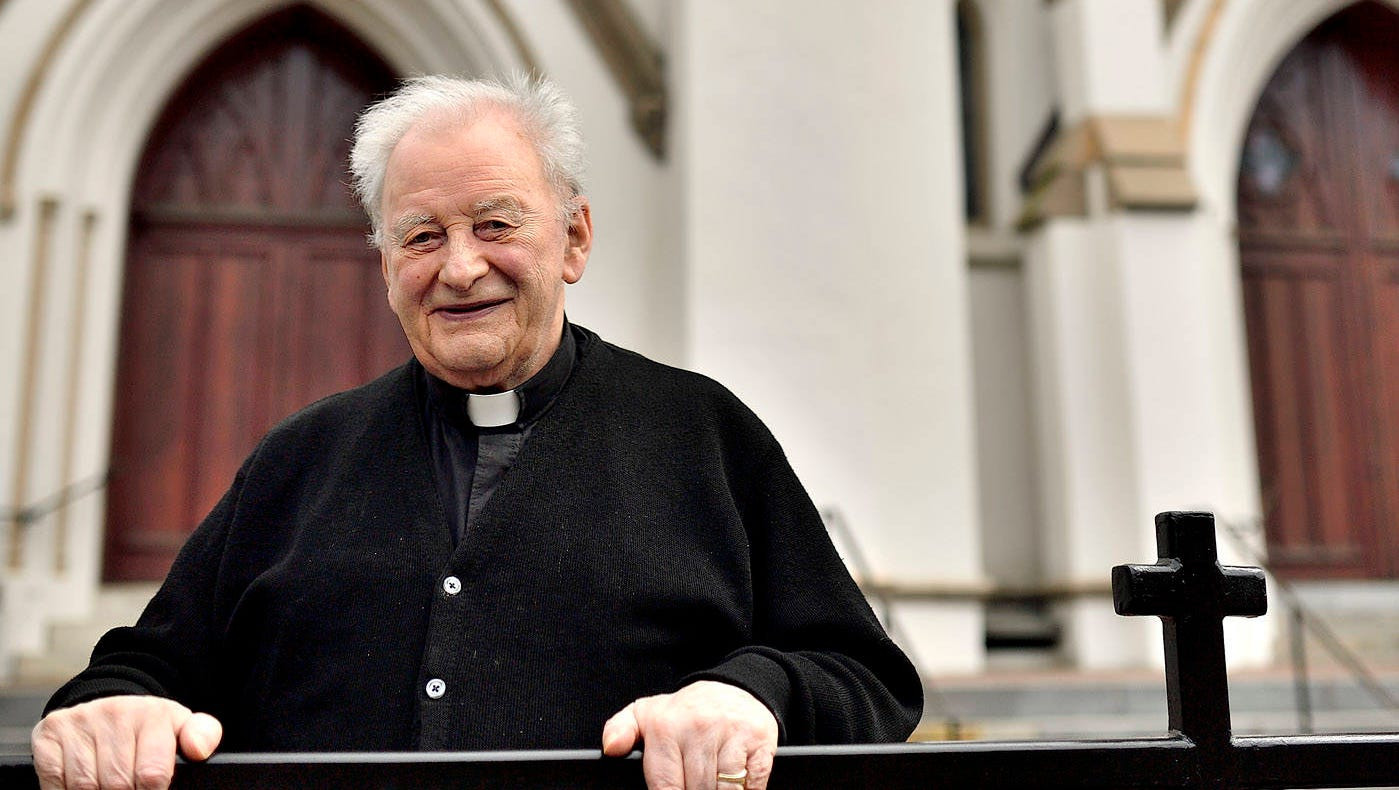Israel's Deadly Game: Assassinating Hamas Leaders to Sabotage Peace Talks
Since Hamas's October 7 attack on Israel, the country's military has killed thousands of Hamas fighters in Gaza—a small minority of the 40,000 Palestinians it has murdered in the Strip over the past ten months. But the first time in recent years that Israel executed one of the movement’s leaders abroad was in January. Cease-fire talks were already stalling in the face of intransigence from Prime Minister Benjamin Netanyahu’s office when, on January 2, Israel launched a drone targeting a Hamas office in al-Dahiyeh, in south Beirut. It killed Saleh al-Arouri, deputy chairman of the organization’s political wing and the military commander of the West Bank. This was a preview of the more brazen escalations that, in recent weeks, have all but confirmed Israel’s desire to undermine prospects for a cease-fire and threatened to set off a regional war.
Six months later Israel again struck in Beirut: on July 30 an airstrike killed a high-ranking Hezbollah commander named Fouad Shukr. (Israel had accused Hezbollah of launching a rocket attack from Lebanon that three days earlier had killed twelve civilians, mostly children, in the occupied Golan Heights; Hezbollah denies responsibility.) The next day, a bombing in Tehran killed Ismail Haniyeh—the leader of Hamas’s political wing and its head negotiator in the cease-fire talks—who was in the capital for the inauguration of Iranian President Masoud Pezeshkian. Netanyahu has yet to claim responsibility for Haniyeh’s assassination, but Israel’s involvement is widely suspected.
Why Kill the Negotiator?
Why kill the person you are ostensibly negotiating peace with? If Netanyahu did indeed have Haniyeh executed, it’s hard not to conclude that he did so to scuttle the US-brokered deal—a three-phase plan that begins with an exchange of Israeli captives and Palestinian prisoners before advancing into a permanent cease-fire and eventual reconstruction efforts. Netanyahu has long maintained that he, along with his far-right coalition, will reject any agreement that requires a permanent cease-fire in exchange, and will only tolerate a short suspension of violence, long enough to secure the release of the approximately seventy surviving captives, before it resumes its objective of destroying Hamas—which, for its part, has agreed to release the captives in exchange for some of the almost 10,000 Palestinian prisoners in Israeli jails and a permanent cessation of violence.
In recent weeks pressure has mounted on Netanyahu’s government to accept a deal: from a Democratic US administration gearing up for elections, from Israel’s own military establishment and center-right politicians, from the hostages’ families, and from international bodies like the United Nations General Assembly. Before Haniyeh’s assassination, even members of Israel’s top military brass—including the defense minister, the army’s chief of staff, and the directors of the Mossad and Shin Bet—had called on Netanyahu to reach a deal with Hamas because, among other factors, they consider it the only way to secure the remaining captives’ release.
By eradicating select leaders, Netanyahu has been able to stall the negotiations while showing strength to these various parties, boasting that he can defeat Hamas and dismantle the movement one architect at a time. This echoes an older Israeli strategy. The country’s leaders have long claimed that they lack partners to engage with, while systematically executing crucial Palestinian interlocutors. As Mohammed bin Abdulrahman Al Thani, the Qatari prime minister, whose country is deeply invested in securing a cease-fire, put it on X, “How can mediation succeed when one party assassinates the negotiator on the other side?”
A Strategy of Elimination: A History of Assassinations
Israel has long carried out extrajudicial executions of Palestinians—and not only against members of Islamist parties. Since the Nakba, or catastrophe, of 1948, Israeli forces have killed hundreds of Palestinian leaders from all political, social, and cultural backgrounds all over the world, flagrantly violating international law. If this strategy has been meant to bring Israel lasting “security” or dismantle the Palestinian liberation struggle, it must be said to have failed.
In 2003, for instance, at the height of the second intifada, Israel assassinated Ismail Abu Shanab, a senior Hamas political figure who had been instrumental in negotiating the group’s commitment to a cease-fire. In the following days there were two more assassination attempts against Hamas leaders. After that the talks predictably unraveled and the violence of the second intifada ground on for two more years, during which Israel assassinated two of Hamas’s founders: its spiritual leader, Sheikh Ahmed Yassin, and his successor, Abdel Aziz al-Rantissi.
And yet the movement was not extinguished. The second intifada ended when Israel unilaterally disengaged from the Gaza Strip in 2005 and the US pushed for democratic elections within the occupied territories, in line with George W. Bush’s agenda of “democratization.” Up until then Hamas had boycotted elections, claiming that the Palestinian Authority, a product of the Oslo Accords, was an illegitimate body intended to facilitate Israel’s domination of Palestinian territory. But when this round of elections took place, in 2006, Hamas participated. Its rationale was that the second intifada had put a decisive end to the Oslo era, with its endless negotiations toward a two-state solution. The illusion that Israel was interested in ceding control over the occupied territories or that the Palestinian Authority could be the embryo of a future state had been shattered. Now, from Hamas’s perspective, the PA could be recast as something quite different: a vehicle for reinvigorating the Palestinian liberation struggle.
In contrast to Fatah, which had cultivated diplomatic relations with the Israelis as part of the so-called peace process, Hamas remained defiant, focused on resisting the occupation by both military and, now, political means. Rather than limiting Palestinian political aspirations to the PA, it continued to call for resuscitating the Palestine Liberation Organization, turning it into an inclusive and representative body that would include Hamas and Islamic Jihad, Islamist groups that remained formally opposed to the partition of Palestine. Meanwhile its political platform, “Change and Reform,” concentrated on domestic issues within the PA, calling for tackling corruption and supporting a pluralist, independent civil society. This attracted many Palestinians in the occupied territories, who were widely dissatisfied with Fatah’s political failures and shady financial dealings. Many were also inclined to reject Israeli- and American-imposed “peace” diktats, such as coordinating security with the Israeli army and negotiating with Israeli politicians while the settlements expanded with impunity. And so, barely two years after its founders and top leaders were assassinated, Hamas swept to power.
The Israeli and American responses were swift and devastating. The US government led an effort to overturn the results and block Hamas’s entry into government, including by withholding aid to the PA. The pressure exacerbated longstanding tensions between Hamas and Fatah, which were then fragilely attempting to resolve their political differences. Within a year of the election, a civil war erupted, with Hamas ultimately expelling its rival from the Strip. Israel tightened the blockade on Gaza, which had been in place since the 1990s, so that barely a trickle of people and goods were allowed in or out. It became an open-air prison where Hamas—and with it two million Palestinians—were isolated and contained.
A New Generation of Leaders: Sinwar's Rise
Leading Hamas through these turbulent years was Khaled Meshal, who had succeeded Yassin and al-Rantissi (and whom Israel had tried to assassinate in Jordan in 1994). A charismatic politician, he expanded Hamas’s relations with other countries in the region, leading diplomatic missions and cultivating bilateral relations. By the time Hamas ran for elections he had firmly established the movement as a political presence. He also strengthened its structure to prepare it to survive the blockade and further assassination attempts on its top echelon, while also navigating the turbulence of the revolutions sweeping over the region in the 2010s.
During the 1990s and early 2000s, under Yassin’s leadership, Hamas had organized its various bodies and cells into military, political, and social services wings. All three reported to a politburo, the organization’s highest body, which represented the group’s various constituencies: the West Bank, Gaza, the prisoners, and the diaspora. The military wing operated underground. It abided by the overall strategic direction set by the politburo, but had relative autonomy and kept the details of its operations secret outside its own tight-knit cells. Now this structure came under pressure as Hamas emerged as a governing authority in Gaza, with the significant public burden of operating under a blockade.
During these years many Israelis came to believe—I would say deluded themselves into believing—that their government had brought them security by suppressing Palestinian political violence with sheer force, from targeted assassinations to a blockade on Gaza and security coordination with a pliant Palestinian leadership in the West Bank. But Palestinians, subjected to the daily violence of the ongoing Nakba, never felt they had such security. They understood that the veneer of Israeli stability came at the cost of their rights and freedoms. In the long run, executing, imprisoning, or exiling Palestinian leaders while subjugating Palestinians would produce nothing but more anger, resistance, and violence, as the attacks of October 7 bore out.
Israel’s leaders and their US backers do not seem to have learned that lesson. Perhaps the most striking affirmation of the futility of Israel’s assassination strategy is that, last week, Hamas replaced Haniyeh with Yahya Sinwar, one of the masterminds of October 7. When Meshal succeeded Rantissi during the second intifada, the news was kept under wraps for some time to protect him. The movement showed no such caution in declaring Sinwar as its new leader. He is an elusive figure who has used Hamas’s tunnel networks in Gaza to evade Israeli forces for the past ten months. The focus on Sinwar only intensified after July, when Israeli officials claimed that Mohammad Deif—the much-targeted leader of Hamas’s military wing and another central planner of October 7—had been among the ninety people their military had killed in an airstrike on a designated humanitarian zone in al-Mawasi, on Gaza’s southern coast. (Hamas has not confirmed his death.)
On one level, Sinwar’s appointment embarrassed the Israeli leadership by stressing Hamas’s military survival. But it has broader ramifications. Sinwar, who has spent many years in Israeli prisons, has adeptly developed the movement’s capacity for asymmetric warfare. In 2018, in a rare Hebrew-language interview with the Israeli daily Yedioth Ahronoth, he admitted Hamas’s military inferiority. “You are stronger than us where it’s not even comparable,” he said, “but you will never, ever win.” He fought with agility from a position of military weakness and used his enemy’s hubris against it—ultimately by launching a devastating attack from Gaza, a prospect that the Israeli army had dismissed. In the period just after the 2018–2019 Great March of Return, during which Israeli soldiers had shot at peaceful Palestinian demonstrators, the military wing leveraged the popularity of the protests to launch attacks with flaming kites and incendiary balloons, sound disturbances into Gaza’s periphery communities, and then missiles. These created more disruption than popular mobilization had done, forcing Israel to ease restrictions on the blockade.
A Dangerous Escalation
By assassinating Shukr and Haniyeh, Israel’s leaders also signalled that they are willing to risk destabilizing the whole region. They killed the Hamas leaders in two nations with which Israel was already engaged in active hostilities. Hezbollah and Israel have been skirmishing since October 7, dancing around the unofficial redlines drawn since Israel’s last devastating war on Lebanon in 2006, which ended in its defeat. These clashes have forced hundreds of thousands of Israeli and Lebanese civilians to evacuate. That Hezbollah is a close ally of Iran has not prevented the Netanyahu government from more directly confronting the Iranians—first by attacking an Iranian diplomatic mission in Syria this past April, provoking rocket fire from Tehran into Israel, and then by assassinating Haniyeh in Tehran. Iran’s and Hezbollah’s reprisals have so far been restrained, but there is a widespread sense that their patience is running thin and that Iran will feel strategically compelled to deter further incursions.
A Recipe for Disaster
A regional war could significantly damage Israel even further. The country’s army is already materially weakened and overextended after ten months of grinding warfare in Gaza and relies entirely on US support to confront Hamas’s fighters; now it faces the prospect of another front opening in the north and an inflamed confrontation with its most powerful regional enemy. But Hezbollah and Iran know that such an escalation would not necessarily go in their favor. They have signaled that they understand the dangers of a full-scale regional war, which could also invite firmer US involvement. From their perspective, it might be more prudent to stay patient, slowly draining Israel’s military and economy and watching it isolate itself on the global stage.
The US, as ever, is supporting Israel, to the detriment of its own interests. The Biden administration claims that it is seeking to avoid a regional confrontation: following Haniyeh’s execution the president, in a call that was widely reported as tense, pushed Netanyahu to accept a cease-fire deal. Last week Biden revived the cease-fire proposal alongside Qatar and Egypt, calling the parties to return to the table. Yet the US is not willing to punish Israeli provocations, let alone reconsider its full-throttle support of the state. Within days of Haniyeh’s murder, the US was mobilizing its military resources for Israel’s defense in preparation for Iranian retaliation, including sending aircraft carriers to the Mediterranean. The Israelis, for their part, were talking about a preemptive defensive attack on Iran.
The Biden administration, either in reckless adventurism or utter weakness, is allowing itself to be pulled into a war not of its choosing by a nation intent on maintaining a genocide with no achievable military goal, legal basis, or moral justification; a nation that the international human rights community, before October 7, had accused of committing the crime of apartheid against the Palestinian people, and whose leaders face possible arrest warrants issued against them by the International Criminal Court. In the process, Netanyahu is driving the US’s interests further from those of its supposed ally. A regional conflict would not be limited to Palestinians, or even to Lebanon and Iran; it could quickly expand to include Iraq, Syria, and Yemen, with dramatic consequences for Jordan and Egypt. Yet rather than use America’s military, diplomatic, and political leverage to demand a cease-fire, Biden softly urges Israel’s leaders to abide by the agreement they ostensibly brokered, even as he refills their military and financial arsenals and defends them in the international arena.
All evidence suggests that these recent assassinations are at best a pyrrhic victory. Israel may keep claiming that, in Haniyeh’s absence, it will corner Hamas into a cease-fire, that a peace can be forced onto Gaza, and that its actions are deterring Iran and Hezbollah. But this rings hollow. Israel has never looked weaker, more divided, or more erratic, and alongside its American ally it has made a mockery of international governance and the rules of war. Netanyahu and Biden both seem poised to make the same mistake as their predecessors: to believe that Israel can kill its way to peace.




